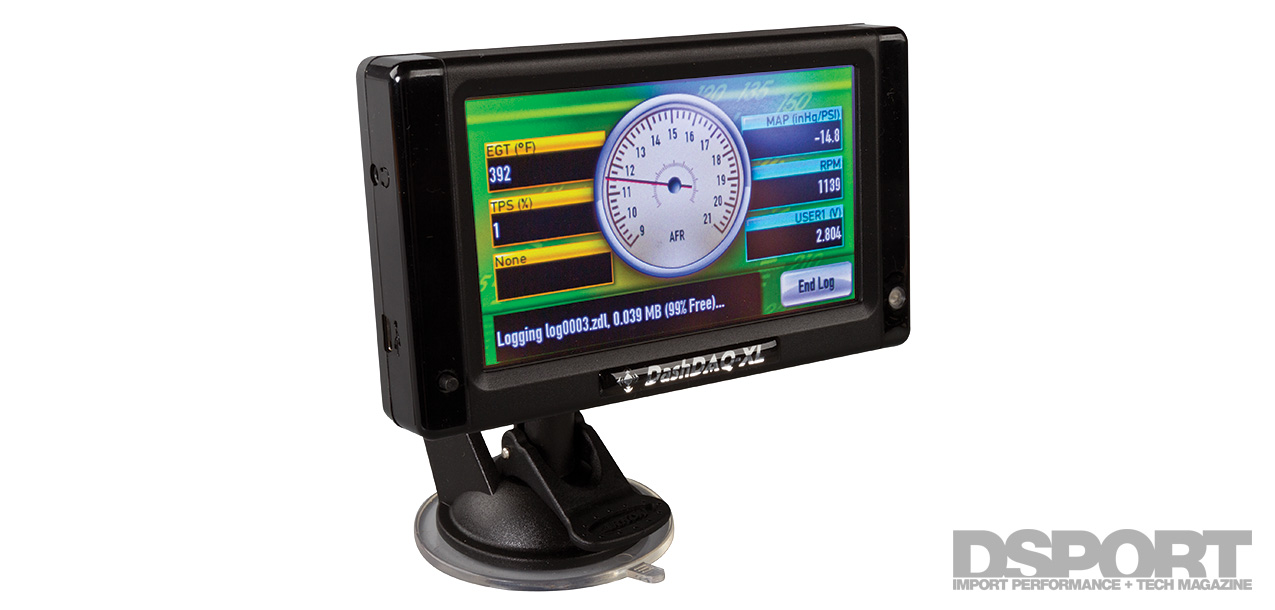Racers, their tuners, and like-minded enthusiasts have propelled the tuning industry to once unimaginable new heights. Tuners and consumers alike have gained volumes of knowledge. Thanks to reflash tuning solutions for factory ECUs and greater availability of plug-and-play stand-alone engine management systems, vehicle performance has taken great strides. But with strides come greater risks, and the precision of engine tuning can make the difference between big power or big problems.
Text and Photos by Richard Fong
IDEAL RATIOS
 For a combustion engine, proper function hinges on the delivery of a proper air-to-fuel ratio. But what is the ideal ratio? With each type of fuel, the stoichiometric (stoic) airfuel ratios varies. A stoic ratio is the chemically-correct mixture of air and fuel that results in the complete combustion of fuel. The resulting chemical reaction yields carbon dioxide and water. When the mixture has a higher fuel content, the condition is known as “fuel rich.” If the fuel content is lower, the mixture is considered “fuel lean.” A ratio of approximately 14.7-to-1 is stoichiometric for gasoline. In practice, a engines under medium-to-heavy load will have excessively high combustion temperatures and EGTs if run at stoichiometric. A fuel rich mixture is required for an engine under load to keep in cylinder temperatures in order. On pump gas, most tuners chose air-fuel ratios between 11.0- and 12.5-to-1 for forced induction applications at wide open throttle (WOT). All motor engines, are typically run between 12.5- and 13.5-to-1 ratios at WOT.
For a combustion engine, proper function hinges on the delivery of a proper air-to-fuel ratio. But what is the ideal ratio? With each type of fuel, the stoichiometric (stoic) airfuel ratios varies. A stoic ratio is the chemically-correct mixture of air and fuel that results in the complete combustion of fuel. The resulting chemical reaction yields carbon dioxide and water. When the mixture has a higher fuel content, the condition is known as “fuel rich.” If the fuel content is lower, the mixture is considered “fuel lean.” A ratio of approximately 14.7-to-1 is stoichiometric for gasoline. In practice, a engines under medium-to-heavy load will have excessively high combustion temperatures and EGTs if run at stoichiometric. A fuel rich mixture is required for an engine under load to keep in cylinder temperatures in order. On pump gas, most tuners chose air-fuel ratios between 11.0- and 12.5-to-1 for forced induction applications at wide open throttle (WOT). All motor engines, are typically run between 12.5- and 13.5-to-1 ratios at WOT.
NARROW VISION
Older vehicles are equipped with one or more narrowband (NB) oxygen sensors. These NB oxygen sensors are designed and calibrated to focus on a lambda values of 1.0 or the stoichiometric air-to-fuel ratio of 14.7-to-1 for pump gasoline. This is the ideal air-to-fuel mixture for complete combustion at idle or light cruise. The sensor, which reads from zero to one volt, informs the factory ECU whether air-fuel ratios rise above 14.7:1 (fuel lean) or below 14.7:1 (fuel rich). However, the NB sensor has a limited range. Narrowband sensors are useless under heavy load or acceleration and the factory ECU ignores its reading.


